From fast food to fake food: art exposes junk food

Beauty sometimes hides a deadly trap. Dazzling us with the vividness of their colors, their false freshness, or the perfection of their shapes, some foods call to us, like cruel sirens, from the prepared foods section of the supermarket, the shop windows, or the illuminated menus of fast-food restaurants. Even tied to a chair, it's impossible to escape their charms. We know they won't deliver what they promise, that disappointment will come with the first bite, but even so, something instinctive compels us to grab a tray and make a clean slate .
A version of what we find these days in fast food places or Instagrammable bakeries, where, parodying Oscar Wilde, reality imitates advertising, is Cakes (1963), by the American painter Wayne Thiebaud . The sense of sight is saturated by perfect geometries and pastel colors, we get dizzy with the chocolate spiral, we fall in love with the naive heart and our capacity for choice is clouded. The intense and unreal light refers to the supernatural, as in a modern version of a still life by Sánchez Cotán .
But something doesn't add up. The informed diner's experience alerts us to the need for perfection. Nowadays, it's easy to spot the trap, but it's a credit to the artists of the 1960s that they recognized it when it was still in its infancy and gave tangible form to the term " junk food."
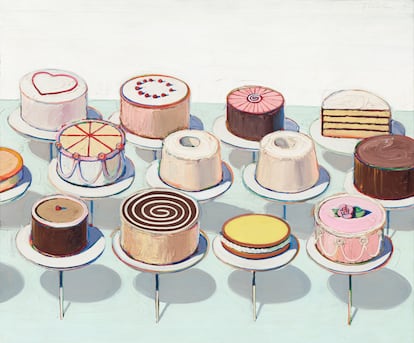
Unlike fast food—with antecedents ranging from Roman thermopolia to medieval street stalls—junk food represented an unprecedented revolution. As semiotician Marcel Danesi points out in The Semiotics of Fast and Junk Food (2024), it does not represent a logical evolution from previous food codes, but rather artifacts that emerge with modern consumerist societies. The key difference, according to Danesi, is that fast food is usually cooked and therefore varies depending on who prepares it, while ultra-processed food is industrially manufactured, and its flavor and shape are homogeneous. There is no hands, experience, or cultural background behind it that cooks it and makes it unique. As Danesi summarizes, there can be good fast food, but never good junk food.
This transition from fast food to industrial food is perhaps ambiguously referenced in the work of Thiebaud and, much more explicitly, in that of Claes Oldenburg , who took as the protagonists of his sculptures what would eventually become the main representatives of junk food: sweets and hamburgers. He presents them in their natural habitats: display cases, as in Pastry Case I (1961-62); on trays, as in False Food Selection (around 1966); or scattered on the floor, as in Two Cheeseburgers, with Everything. (Dual Hamburgers) (1962).
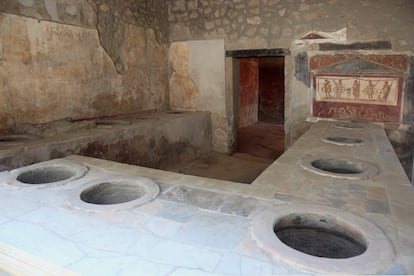
In all cases, they appear in the striking colors and bold forms of advertising language. However, when faced with his sculptures, the viewer's tongue doesn't drool; desire is stopped in its tracks. Their obvious artifice, their disproportionate size, their ingredients (burlap, plaster, and enamel), and their bland appearance, reminiscent of the ravages such food wreaks on the stomachs of its diners, arouse more suspicion than appetite. In Oldenburg's words, his aim was to "frustrate expectations," just as reality does when faced with advertising promises.
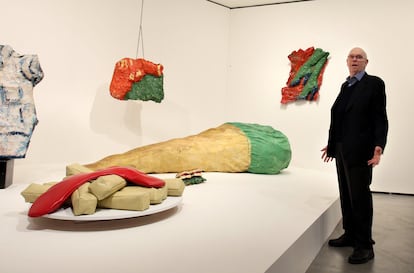
Oldenburg's criticism was not isolated. Other contemporary artists joined in the reflection, filling their works with canned soups, colas, and hot dogs. The culmination came in 1964, when a group led by Robert Watts , James Rosenquist, Andy Warhol , and Oldenburg himself organized the exhibition"American Supermarket" at the Bianchini Gallery in New York. They transformed the space into a fake supermarket with works interspersed with real Campbell's soup cans, sandwiches, and other symbols of modern eating. A slap in the face to the food industry and, in turn, to the art market.
Junk food hits the big screenThe prominence of junk food among artists in the 1960s was far from a temporary phenomenon, and its spread to other visual arts was inevitable. Film was an interesting battlefield, and its initial winner was the food industry, which, using its checkbook to flood the screen with its products through covert advertising, especially in the blockbuster family films of the 1980s, such as ET (1982) and the Back to the Future saga (1985-1990).
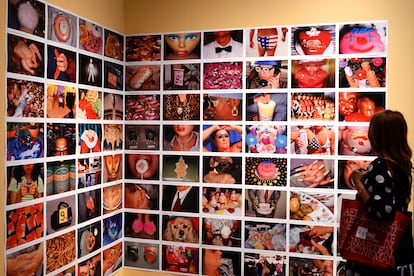
But other filmmakers soon learned how to turn the situation around, using these foods with irony and satirical wit. One of the pioneers was Jamie Uys , with The Gods Must Be Crazy (1980), whose plot tells how the peaceful life of an African tribe is shattered by the accidental arrival of a Coca-Cola bottle, which triggers a fierce fight over what they consider a divine object. It seems like a naive critique compared to the later sarcasm of films like Quentin Tarantino 's Pulp Fiction (1994). In one of its most memorable scenes, hitman Vincent Vega, played by John Travolta, tells his partner Jules (Samuel L. Jackson) as they set out on another job for mobster Marsellus Wallace how strange it is that the French call the Quarter Pounder hamburger "Royale with cheese." The scene, parodied even by The Simpsons , is one of Tarantino's many nods to quintessential junk food, including two fictional establishments: Big Kahuna Burger and Jack Rabbit Slim's, where Mia Wallace (Uma Thurman) takes a big bite of a burger before hitting the dance floor with Vincent, in one of the film's most iconic scenes.
Far from parody humor, other filmmakers have made more direct critiques of the food industry. This is the case in the documentary Super Size Me (2004), in which director Morgan Spurlock ate exclusively McDonald's products for a month to demonstrate its effects; or Fast Food Nation (2006), Richard Linklater 's film based on the book by Eric Schlosser , which sheds light on the darker aspects of the fast food business.
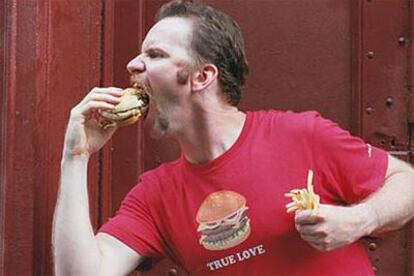
Beyond cinema, other visual arts have also addressed the shift from fast food to junk food. From a seemingly friendly perspective, Martin Parr 's photographs have been offering an accurate snapshot of leisure time among the working classes for decades. Since his landmark work , *The Last Resort* (1986), the British photographer has documented the importance of ultra-processed food as a fundamental element of leisure and working-class life. This interest led to his photobook *Real Food* (2016), which brings together years of work portraying food in popular vacation and leisure spots. Monstrous sausages, sticky buns, and explosively colored cookies star in his images, in what could be considered a food influencer 's nightmare.
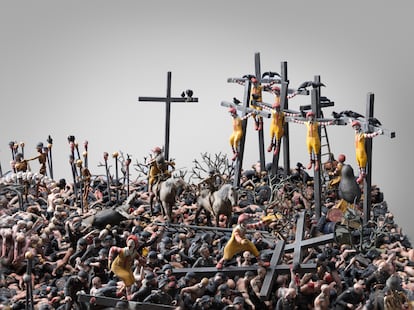
However, Parr's bleak, unfiltered image pales in comparison to the sheer descent into hell posed by certain contemporary works, such as that of the ever-unclassifiable Chapman brothers, who in several of their works—such as *The Sum of All Evil * (2013) or *McHelter Skelter* (2015-16)—present Ronald McDonald not only as a representative of junk food, but as one of the world's great evils. In the collection of pieces that make up the dioramas, Nazi soldiers and McDonald's clowns sow violence and depravity in an apocalyptic landscape filled with tortured bodies. An image as powerful as it is disturbing, with which these artists attempt to counteract the thousands of representations of colorful foods and artificial freshness that have accumulated in our minds. All this perhaps so that, if one of these days we decide to fall into their trap, we will do so, at least, thinking: it won't be because the artists haven't warned us.
EL PAÍS




%3Aformat(jpg)%3Aquality(99)%3Awatermark(f.elconfidencial.com%2Ffile%2Fbae%2Feea%2Ffde%2Fbaeeeafde1b3229287b0c008f7602058.png%2C0%2C275%2C1)%2Ff.elconfidencial.com%2Foriginal%2F90f%2Ff12%2F7ad%2F90ff127ad2f716297eca044fef6ca9ee.jpg&w=3840&q=100)
